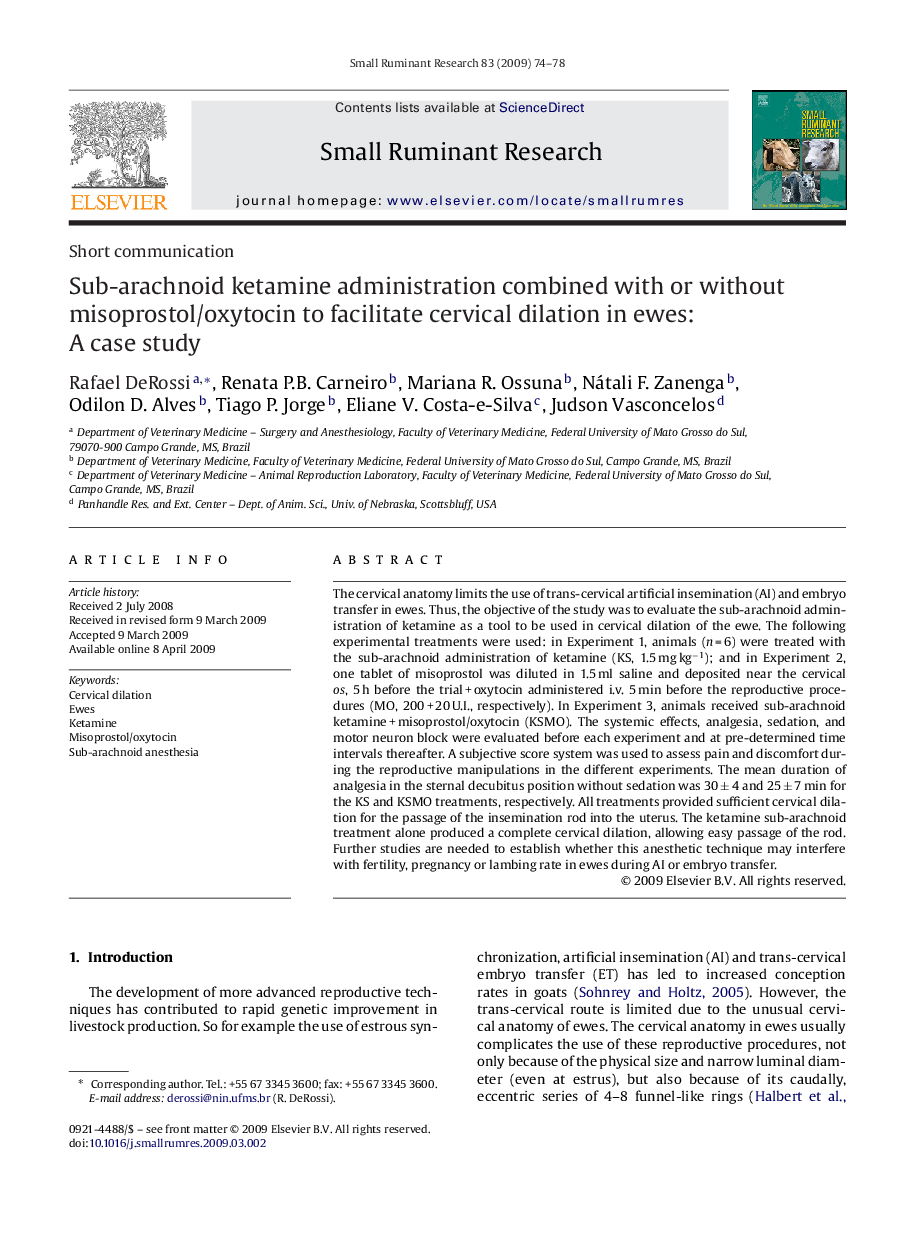| Article ID | Journal | Published Year | Pages | File Type |
|---|---|---|---|---|
| 2457804 | Small Ruminant Research | 2009 | 5 Pages |
The cervical anatomy limits the use of trans-cervical artificial insemination (AI) and embryo transfer in ewes. Thus, the objective of the study was to evaluate the sub-arachnoid administration of ketamine as a tool to be used in cervical dilation of the ewe. The following experimental treatments were used: in Experiment 1, animals (n = 6) were treated with the sub-arachnoid administration of ketamine (KS, 1.5 mg kg−1); and in Experiment 2, one tablet of misoprostol was diluted in 1.5 ml saline and deposited near the cervical os, 5 h before the trial + oxytocin administered i.v. 5 min before the reproductive procedures (MO, 200 + 20 U.I., respectively). In Experiment 3, animals received sub-arachnoid ketamine + misoprostol/oxytocin (KSMO). The systemic effects, analgesia, sedation, and motor neuron block were evaluated before each experiment and at pre-determined time intervals thereafter. A subjective score system was used to assess pain and discomfort during the reproductive manipulations in the different experiments. The mean duration of analgesia in the sternal decubitus position without sedation was 30 ± 4 and 25 ± 7 min for the KS and KSMO treatments, respectively. All treatments provided sufficient cervical dilation for the passage of the insemination rod into the uterus. The ketamine sub-arachnoid treatment alone produced a complete cervical dilation, allowing easy passage of the rod. Further studies are needed to establish whether this anesthetic technique may interfere with fertility, pregnancy or lambing rate in ewes during AI or embryo transfer.
